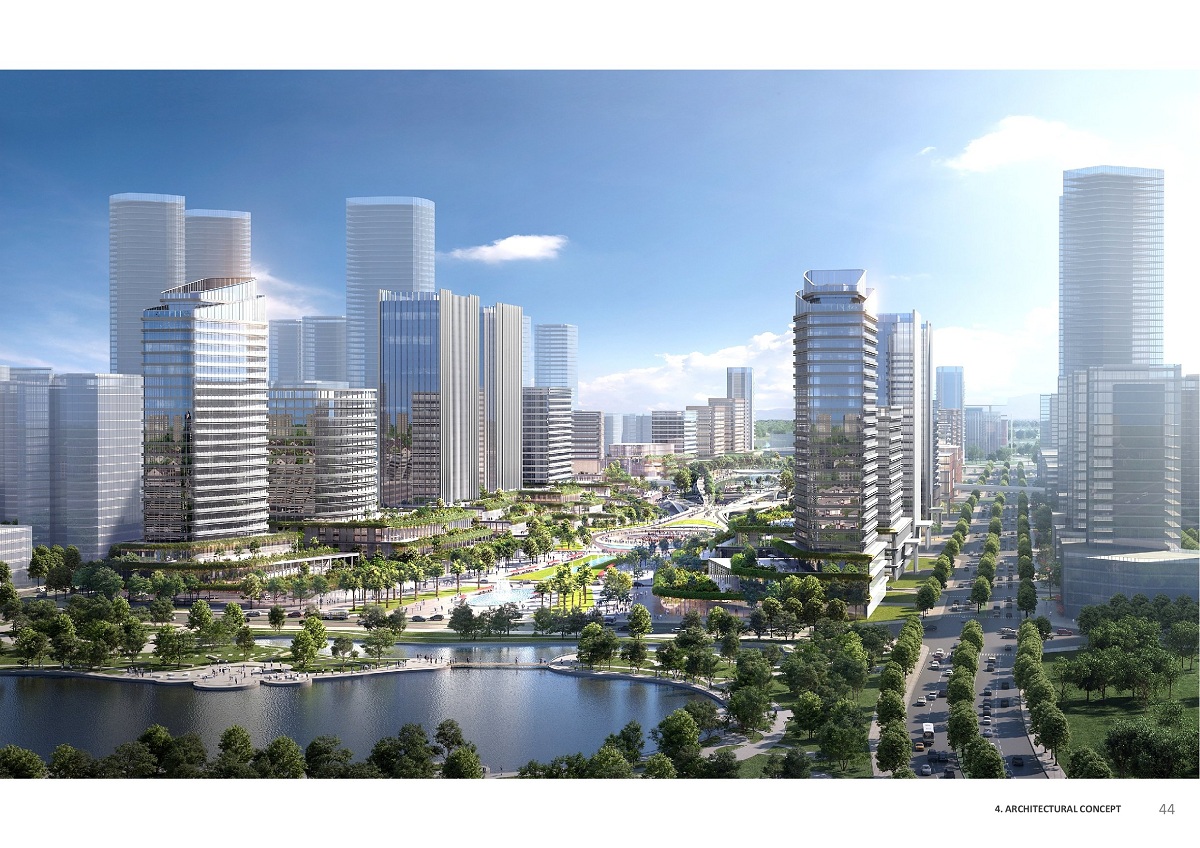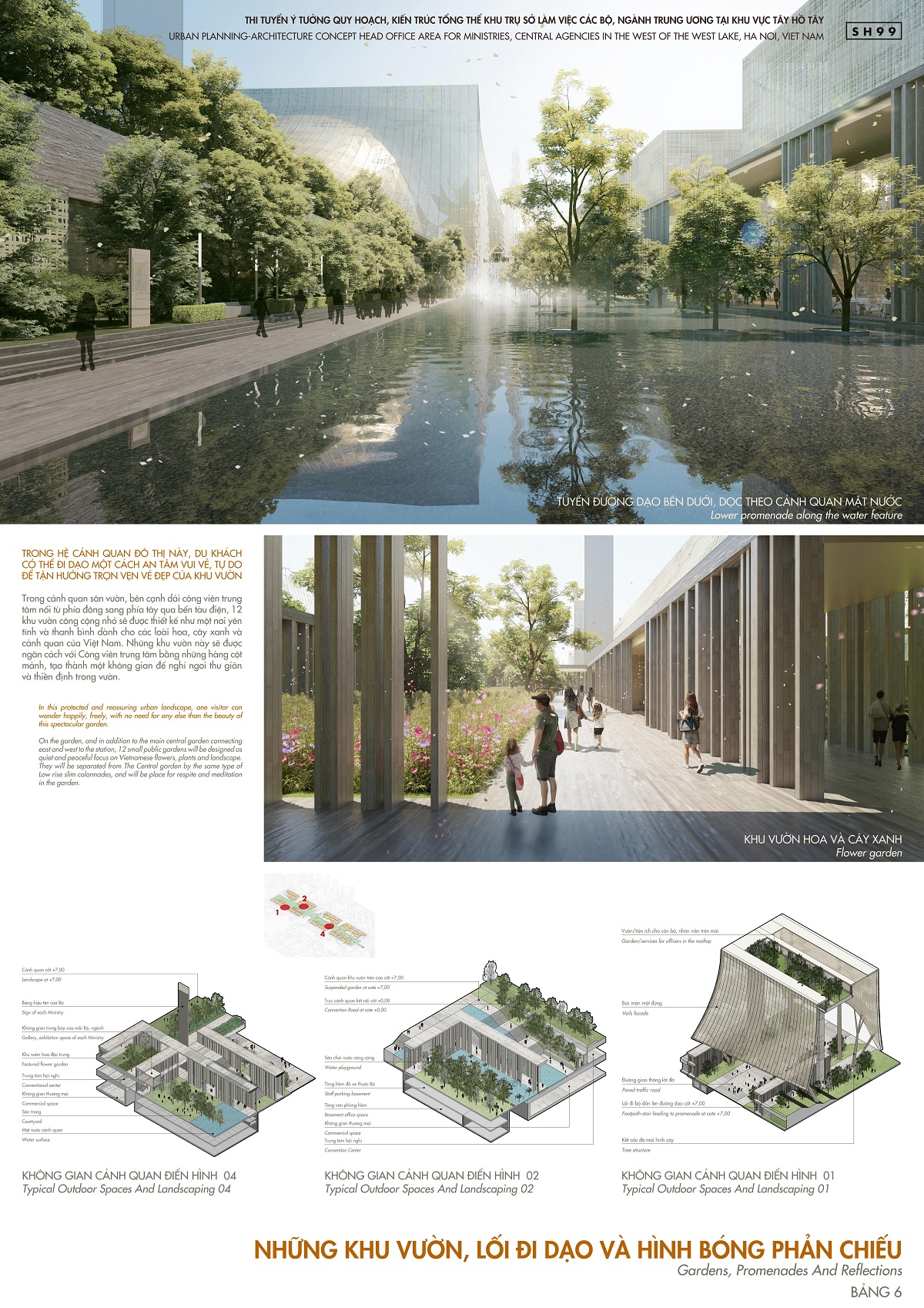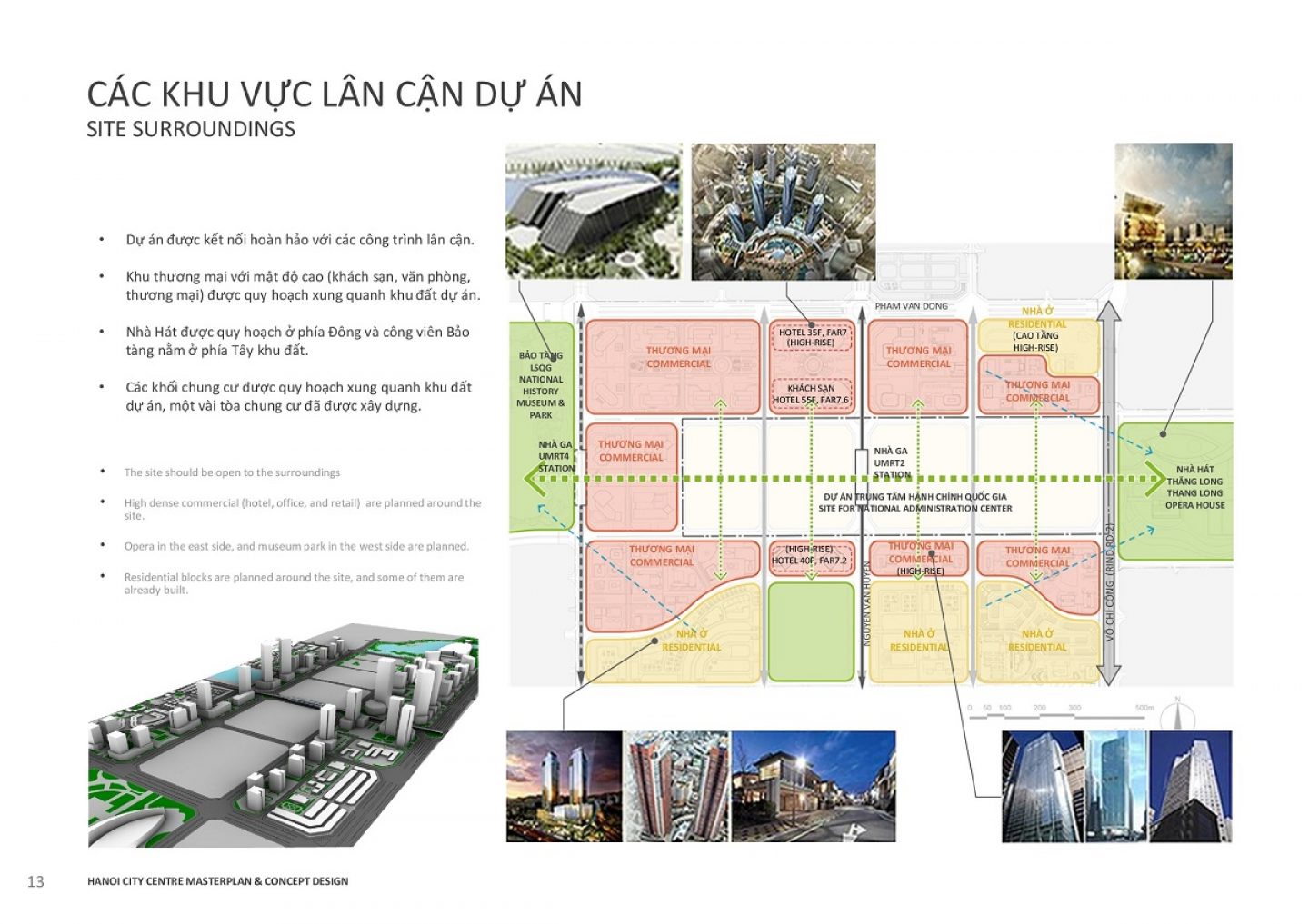[Kết quả Cuộc thi tuyển Ý tưởng quy hoạch, kiến trúc tổng thể Khu trụ sở các Bộ ngành Trung ương]

Executive Summary

This document presents a comprehensive overview of the results of the design competition for the overall planning and architecture of the Central Government Ministries’ headquarters complex. The competition attracted a wide range of innovative and ambitious proposals, showcasing Vietnam’s burgeoning architectural talent and forward-thinking approach to urban planning. This report details the winning entry, highlighting its key features and the rationale behind the selection process. Furthermore, it explores the broader implications of the project for sustainable development, urban revitalization, and the future of governmental administration in Vietnam. We analyze the winning design’s innovative solutions to challenges such as efficient space utilization, environmental sustainability, and public accessibility, offering valuable insights for future large-scale urban development projects.

Introduction
The selection of a winning design for the Central Government Ministries’ headquarters complex marks a significant milestone in Vietnam’s ongoing urban development. This prestigious competition attracted entries from leading architectural firms both domestically and internationally, each presenting a unique vision for the future of governmental administration in the country. The winning design represents a bold and innovative approach, seamlessly integrating modern architectural principles with Vietnam’s rich cultural heritage. This document provides an in-depth analysis of the competition’s results, focusing on the key features of the winning proposal and its potential impact on the nation’s capital.
Frequently Asked Questions
Q: What were the main criteria for judging the competition entries?
A: The judging panel considered a variety of factors, including architectural design excellence, functionality, sustainability, cultural sensitivity, economic viability, and the overall contribution to the urban landscape. Sustainability, aesthetics, and practicality were all heavily weighted in the evaluation.
Q: When is construction expected to begin on the new complex?
A: The timeline for construction is currently under review, but preliminary estimates suggest a commencement date within the next 12-18 months, pending necessary approvals and preparations. The project is anticipated to be a multi-year undertaking, requiring meticulous planning and execution.
Q: How will the new complex impact the surrounding community?
A: The design incorporates strategies to minimize disruption during construction and to enhance the surrounding area once completed. Features like green spaces, improved public transit access, and pedestrian-friendly walkways are designed to positively contribute to the local community. The complex aims to be a vibrant and integrated part of the city, not an isolated entity.
Sustainable Design and Environmental Impact
The winning design prioritizes sustainable practices throughout, significantly reducing its environmental footprint. This commitment to sustainability extends to various aspects of the project.
Green Building Materials: The use of locally sourced and sustainably harvested materials minimizes transportation emissions and supports the local economy. Emphasis is placed on using recycled and renewable materials wherever possible.
Energy Efficiency: Innovative technologies, including solar panels and energy-efficient building systems, are employed to reduce energy consumption and reliance on fossil fuels. Passive design principles are also utilized to minimize the need for artificial heating and cooling.
Water Management: The design incorporates rainwater harvesting and greywater recycling systems to conserve water resources. Landscaping incorporates drought-tolerant plants to further reduce water consumption.
Waste Reduction: Strict waste management protocols are implemented during construction and operation to minimize waste generation and maximize recycling efforts. Zero-waste strategies are a key consideration.
Green Spaces: Extensive green spaces are integrated into the design to promote biodiversity and improve air quality. These spaces also serve as recreational areas for employees and the public.
Urban Integration and Public Accessibility
The design seamlessly integrates the complex into the existing urban fabric, enhancing public accessibility and fostering a sense of community.
Pedestrian-Friendly Design: The design prioritizes pedestrian access with wide, well-lit walkways and ample green spaces, creating a pleasant and safe environment for pedestrians.
Public Transportation Access: The complex is strategically located with convenient access to public transportation, reducing reliance on private vehicles and promoting sustainable commuting options.
Open Public Spaces: The design incorporates public plazas and recreational areas, creating spaces for social interaction and community engagement. These spaces are designed to be inclusive and accessible to all.
Improved Connectivity: The design improves connectivity to the surrounding neighborhoods, providing seamless integration with the existing urban network. This enhanced connectivity fosters a more vibrant and cohesive urban environment.
Enhanced Infrastructure: Improvements to surrounding infrastructure, such as roads and public transportation, are considered to accommodate the increased traffic and activity generated by the complex. The project aims to benefit the wider community.
Architectural Design and Cultural Heritage
The architectural design represents a harmonious blend of modern aesthetics and traditional Vietnamese cultural elements.
Modern Design Principles: The design employs contemporary architectural principles to create a functional and aesthetically pleasing structure. Innovative materials and building techniques are used to ensure efficiency and longevity.
Cultural Heritage Integration: The design subtly integrates elements of traditional Vietnamese architecture and landscaping, creating a sense of place and celebrating the country’s rich cultural heritage. Traditional motifs and materials are incorporated thoughtfully.
Natural Light and Ventilation: The design maximizes natural light and ventilation, creating a comfortable and energy-efficient environment for occupants. This is a core principle of sustainable design.
Flexible Spaces: The design provides flexible and adaptable spaces to accommodate the evolving needs of government ministries. Modular design allows for future expansion and modification.
Artistic Elements: Artistic elements, such as sculptures and landscaping, are incorporated to enhance the aesthetic appeal and create a stimulating environment. Public art serves a dual purpose of beautification and cultural expression.
Technological Integration and Smart City Features
The design incorporates advanced technologies to create a smart and efficient working environment.
Smart Building Systems: The complex is equipped with smart building management systems, including energy-efficient controls and security systems, optimizing performance and sustainability. These systems are fully integrated for optimal efficiency.
Digital Infrastructure: Robust digital infrastructure is installed to support seamless communication and data management. High-speed internet and advanced communication systems are crucial features.
Data Analytics and Monitoring: Data analytics and monitoring systems are employed to collect information on energy consumption, resource usage, and occupant behavior, allowing for continuous improvement and optimization. This allows for proactive maintenance and management.
Security Systems: State-of-the-art security systems are implemented to ensure the safety and security of the complex and its occupants. These systems are designed to be robust and reliable.
Accessibility Features: The complex is designed to be fully accessible to people with disabilities, using universal design principles to ensure inclusivity. Accessibility is a core design principle.
Conclusion
The results of the design competition for the Central Government Ministries’ headquarters complex represent a significant step towards modernizing Vietnam’s governmental infrastructure. The winning design demonstrates a commitment to sustainability, urban integration, and cultural sensitivity. By embracing innovative architectural principles and incorporating advanced technologies, the project promises to create a world-class complex that enhances the efficiency and effectiveness of governmental operations while also serving as a symbol of Vietnam’s progress and ambition. The project’s long-term impact on the urban landscape and the nation’s image on the global stage is anticipated to be significant. The successful integration of sustainable practices, advanced technologies, and cultural elements ensures a lasting legacy for generations to come. This project will not just house government ministries but will serve as a model for sustainable urban development across the nation and potentially beyond.
Keyword Tags
- Central Government Ministries
- Architectural Design Competition
- Sustainable Urban Development
- Smart City Technologies
- Vietnamese Cultural Heritage
